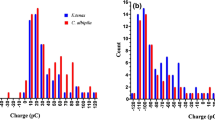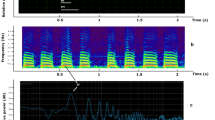Abstract
IT is a curious fact that nearly all insects, even the best flyers, lack static organs, which are so highly developed in other flying or swimming animals. Sensory systems sensitive to air currents have, however, been suggested1 or found2 in certain Diptera, and at the Eighth International Congress of Entomology at Stockholm (August, 1948) I gave a paper on an aerodynamic sense organ in the locusts Schistocerca gregaria Forskål and Locusta migratoria L.3. Since 1947, this knowledge has been used in the late Prof. August Krogh's laboratory, where studies on insect flight are going on. In short, the sensory organ consists of sensory hairs situated on the frons and the vertex of locusts. In suspended animals which have no contact with the ground, stimulation of these hairs by means of a jet of air induces flight movements. Flying stops when the air jet is removed, and starts again on fresh stimulation. In this way sustained 'stationary' flight is possible for at least one hour. The forelegs are retracted as in normal flight; but, under these conditions, the hind legs are never drawn up. It is impossible to induce sustained flight by means of a jet of air when the sense organ has been covered with cellulose paint; uncovering results in a return to normal sensitivity. By covering different parts of the surface of the animal, including the antennæ, it has been shown that only covering of the patches of hairs on the frons and the vertex prevents the flight responses; but if some of them are left uncovered, flight may be induced. Recently (March 1949) similar observations on other Acrididæ have been described by Boyd and Ewer4.
This is a preview of subscription content, access via your institution
Access options
Subscribe to this journal
Receive 51 print issues and online access
$199.00 per year
only $3.90 per issue
Buy this article
- Purchase on Springer Link
- Instant access to full article PDF
Prices may be subject to local taxes which are calculated during checkout
Similar content being viewed by others
References
Wellington, W. G., Canad. J. Research, D, 24 (1946).
Hollick, F. S. J., Phil. Trans. Roy. Soc., London, B, 230 (1940).
Weis-Fogh, T., 8th Int. Congress Entomol., 1948 (in the press).
Boyd, K., and Ewer, D. W., S. Afric. Science, 2 (1949).
Ehnbom, K., Opuscula Entomol., Supp. VIII (1948).
Fraenkel, G., Z. vergl. Physiol., 16 (1932).
Kennedy, J. S., Trans. R. Ent. Soc., Lond., 89 (1939).
Author information
Authors and Affiliations
Rights and permissions
About this article
Cite this article
WEIS-FOGH, T. An Aerodynamic Sense Organ Stimulating and Regulating Flight in Locusts. Nature 164, 873–874 (1949). https://doi.org/10.1038/164873a0
Issue Date:
DOI: https://doi.org/10.1038/164873a0
This article is cited by
-
Identification of optimal feedback control rules from micro-quadrotor and insect flight trajectories
Biological Cybernetics (2018)
-
Role of central and peripheral mechanisms in control of excitability of segmental motor centers in insects
Journal of Evolutionary Biochemistry and Physiology (2004)
-
Role of central and peripheral mechanisms in control of excitability of segmental motor centers in insects
Journal of Evolutionary Biochemistry and Physiology (2004)
-
How locusts separate pattern flow into its rotatory and translatory components (Orthoptera: Acrididae)
Journal of Insect Behavior (1995)
-
The wind-orientation of walking carrion beetles
Journal of Comparative Physiology A (1989)
Comments
By submitting a comment you agree to abide by our Terms and Community Guidelines. If you find something abusive or that does not comply with our terms or guidelines please flag it as inappropriate.



